Abstract
Tuberculosis control by mass domiciliary chemotherapy is now being attempted on an increasingly large scale in the technically underdeveloped countries. The National Tuberculosis Institute in Bangalore, India, is an important centre for the development of such programmes, and the study reported in this paper is an inquiry into the working of an urban tuberculosis programme which is operated under the auspices of the Institute. The study reveals several fundamental weaknesses in the treatment organization in this particular programme, and the authors show that such weaknesses are in evidence in similar programmes elsewhere. However, the authors conclude that a great proportion of the problems of inadequate treatment can be dealt with by improved administration and organization. In the authors' opinion, such improvements merit a much higher priority than measures to perfect the technical aspects of the programmes.
Full text
PDF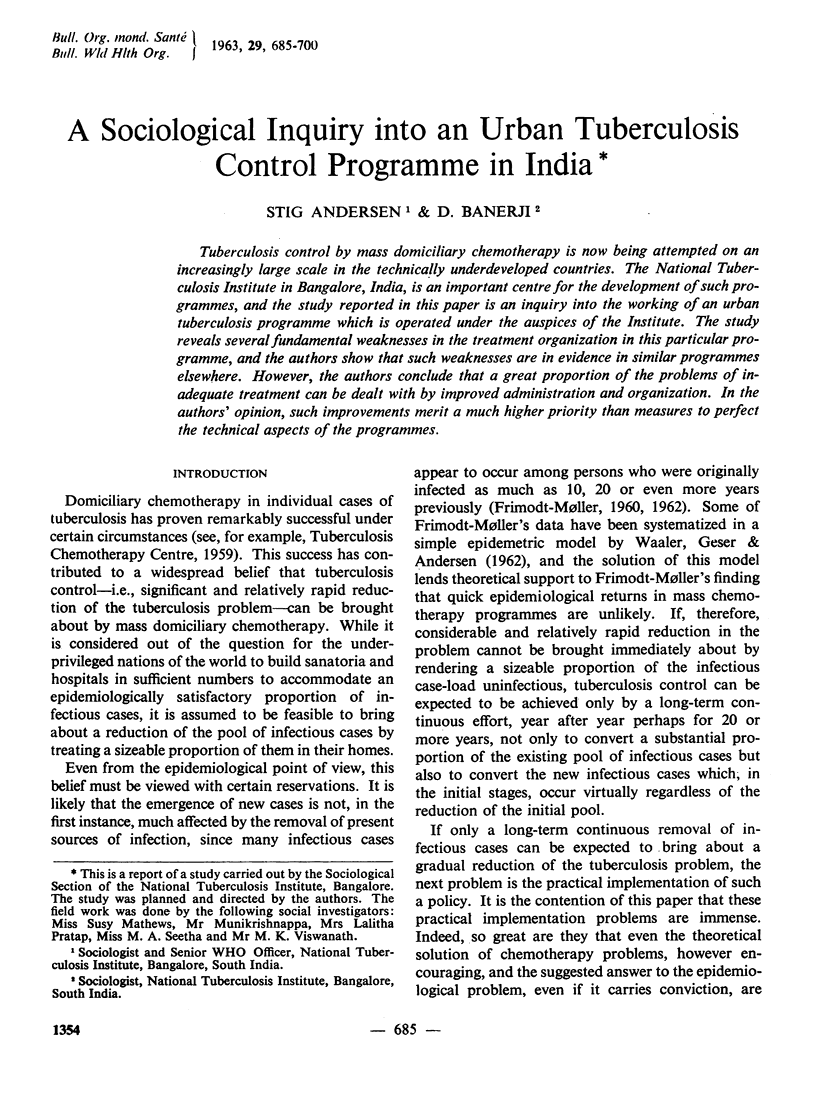
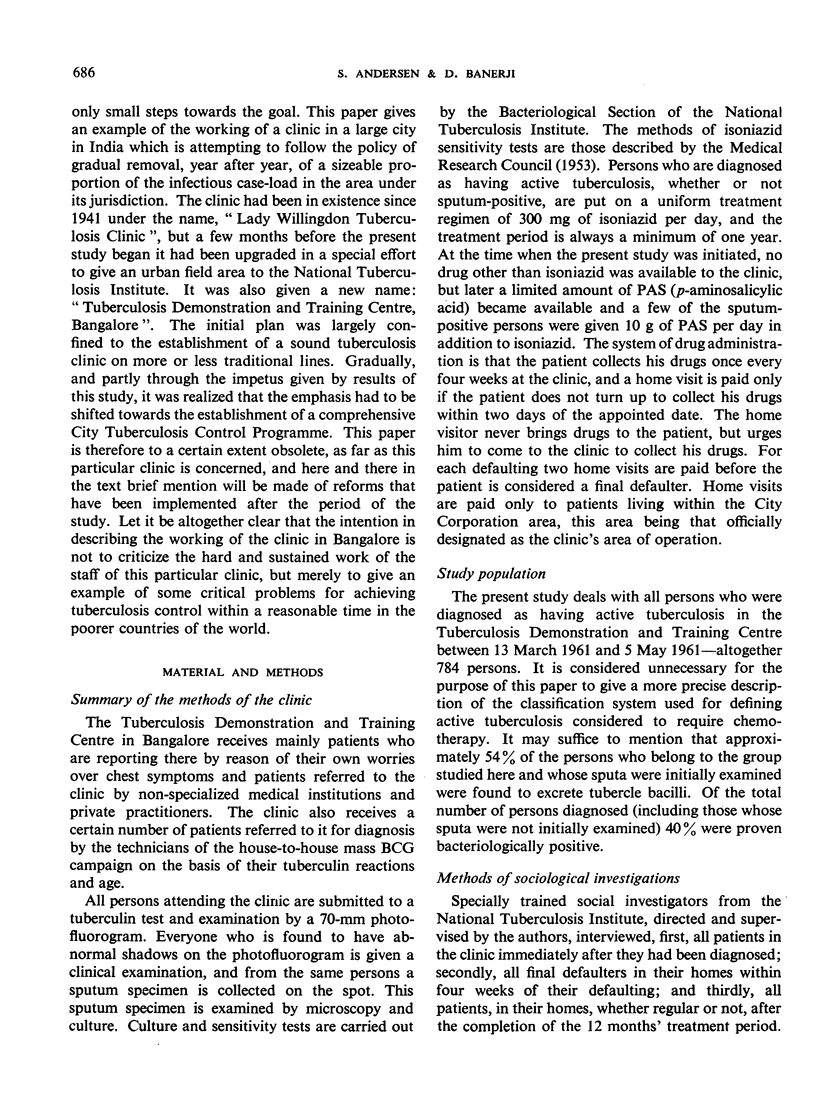
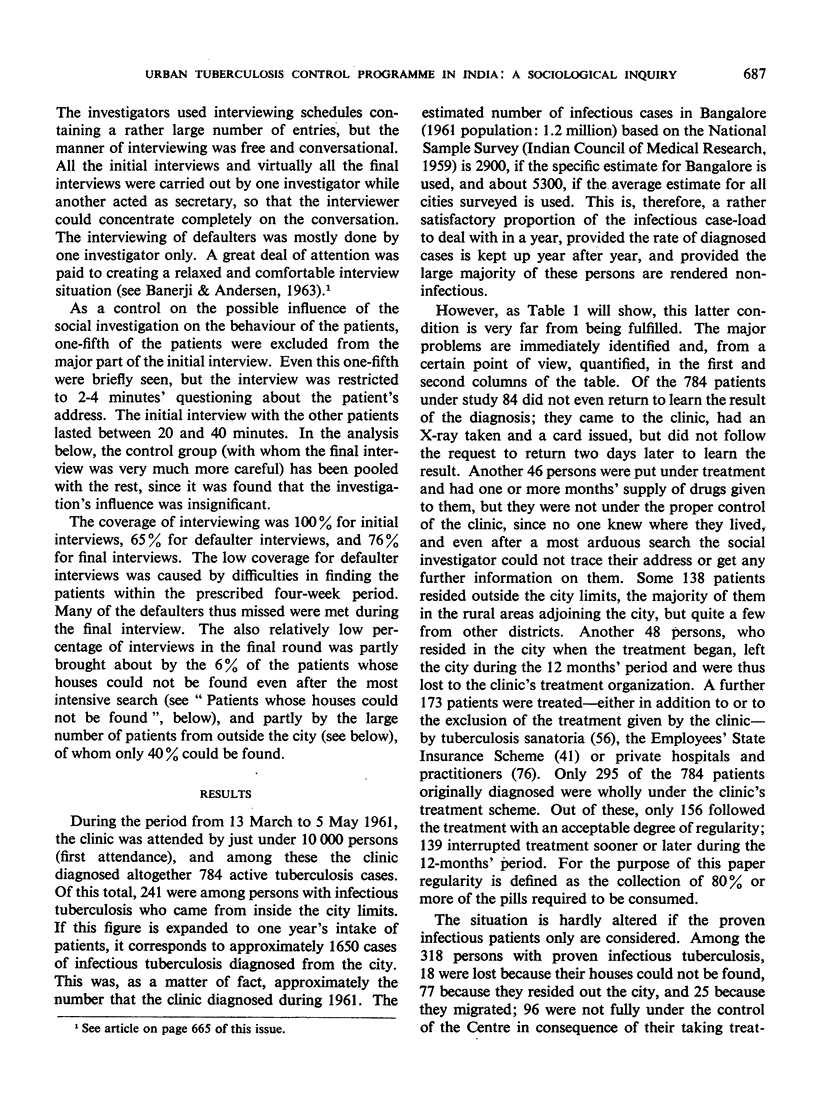
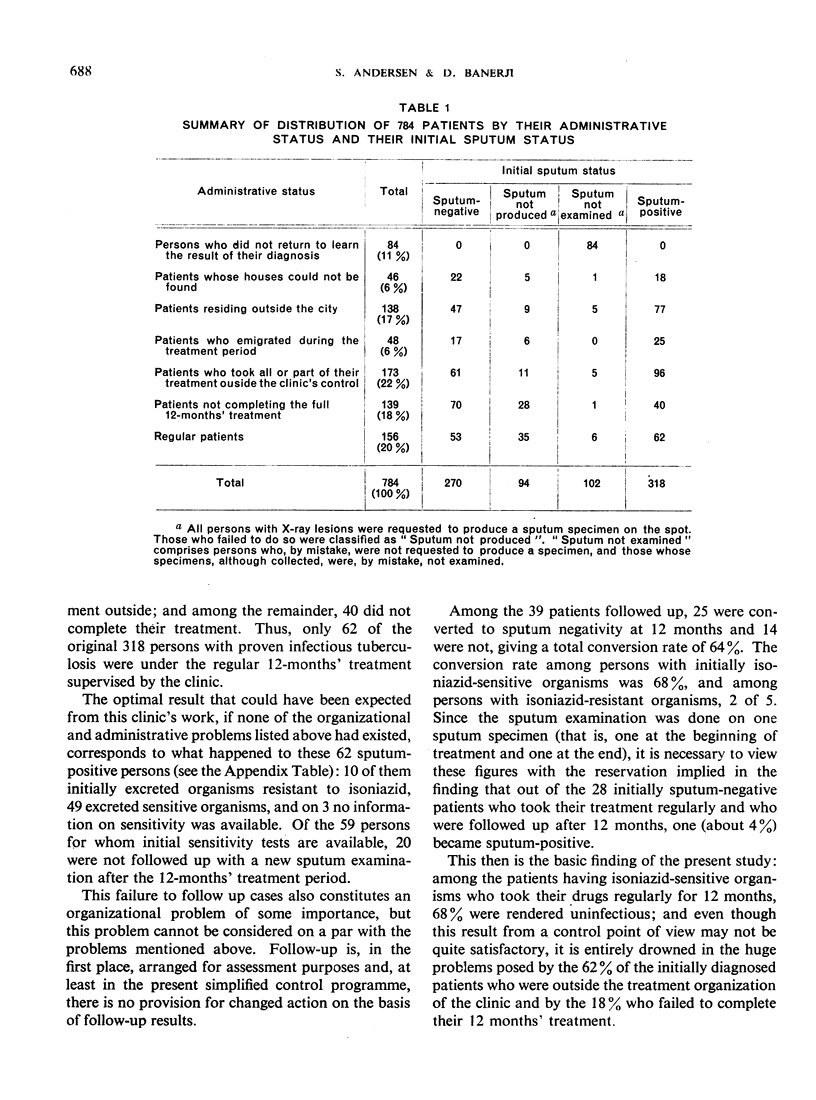

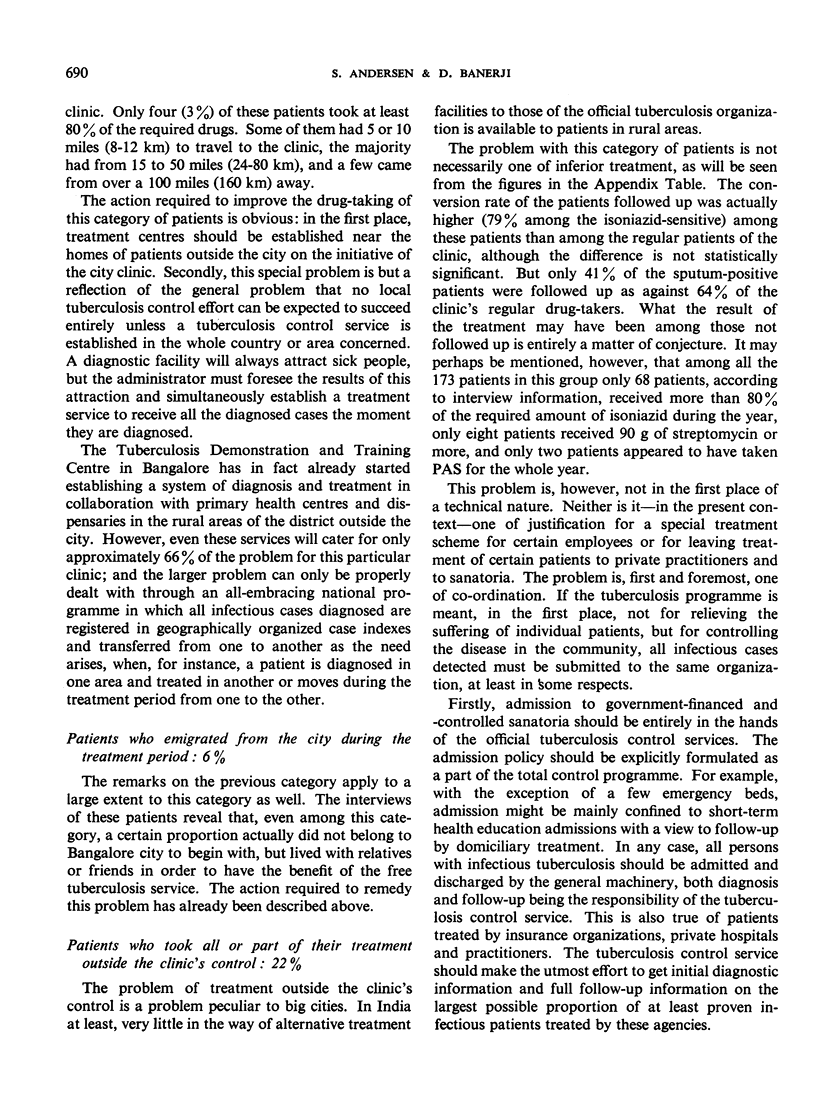

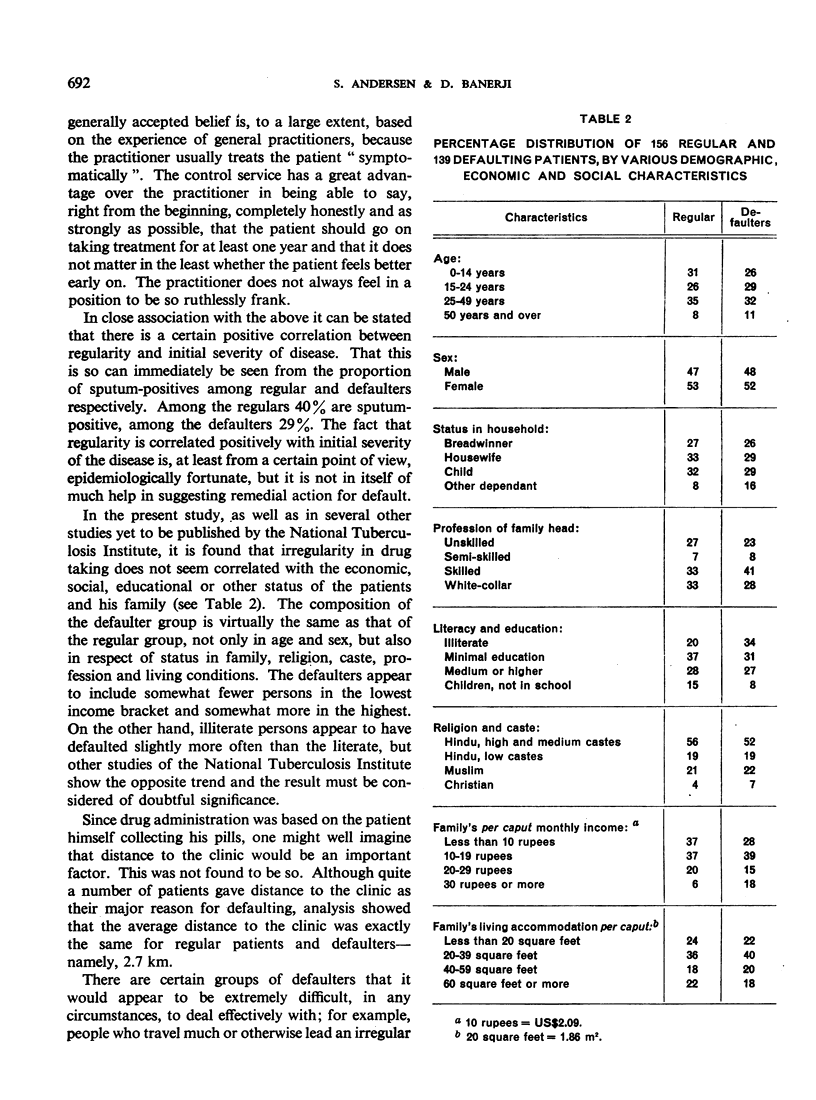
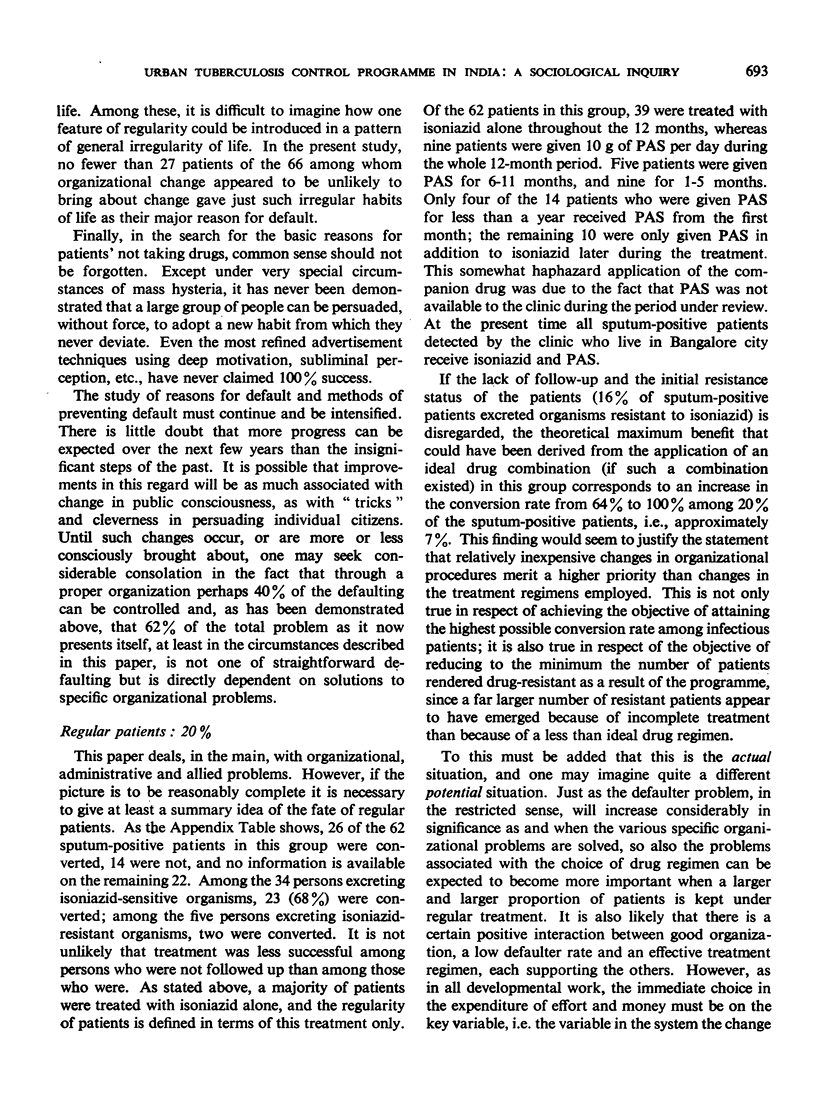
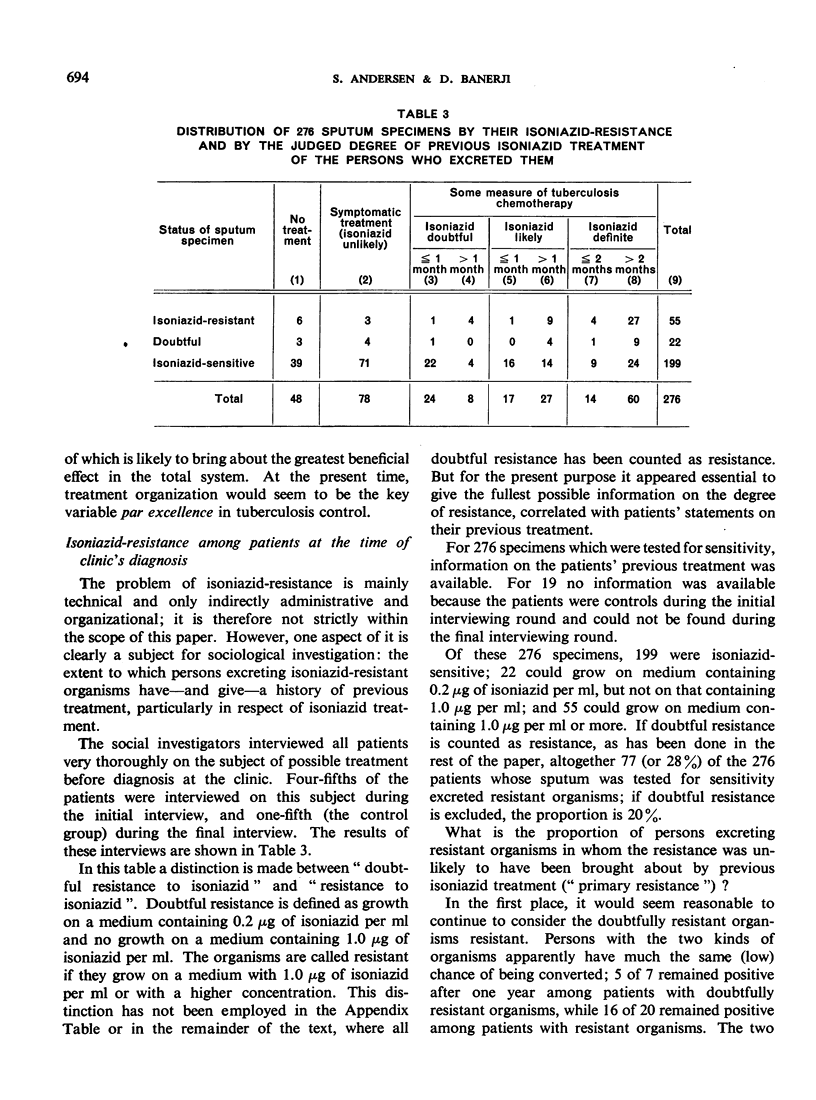
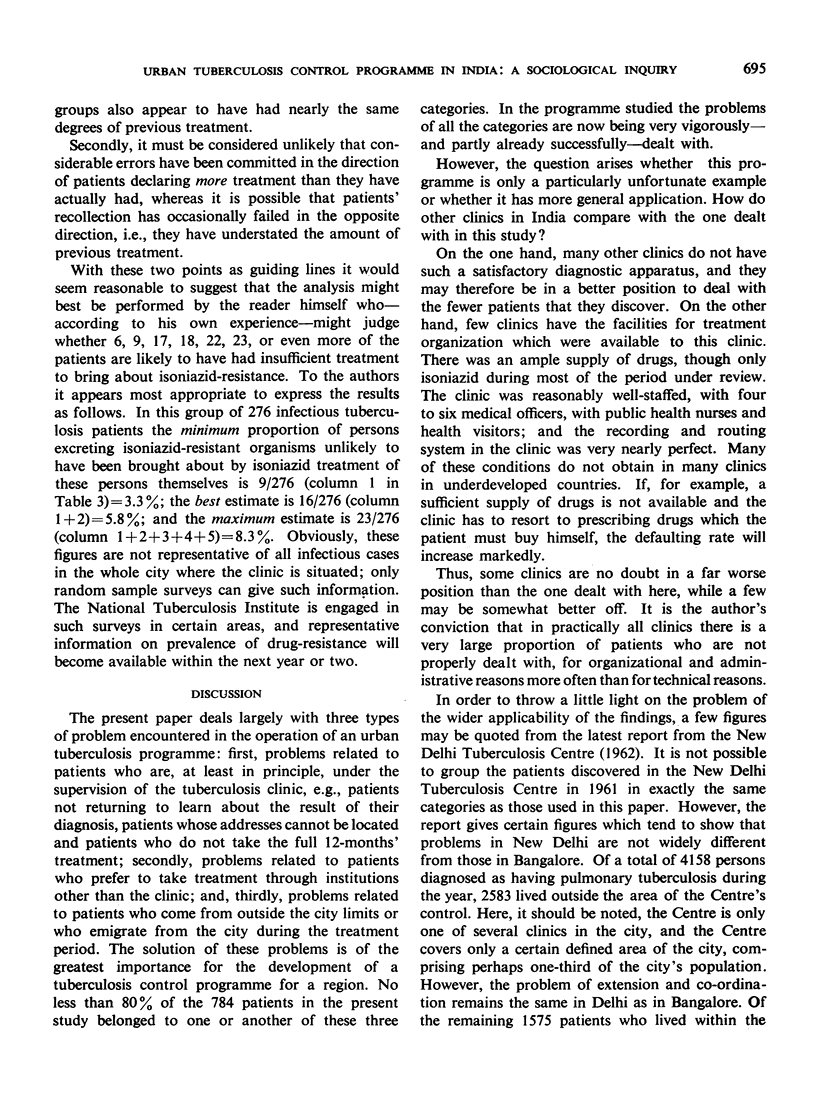
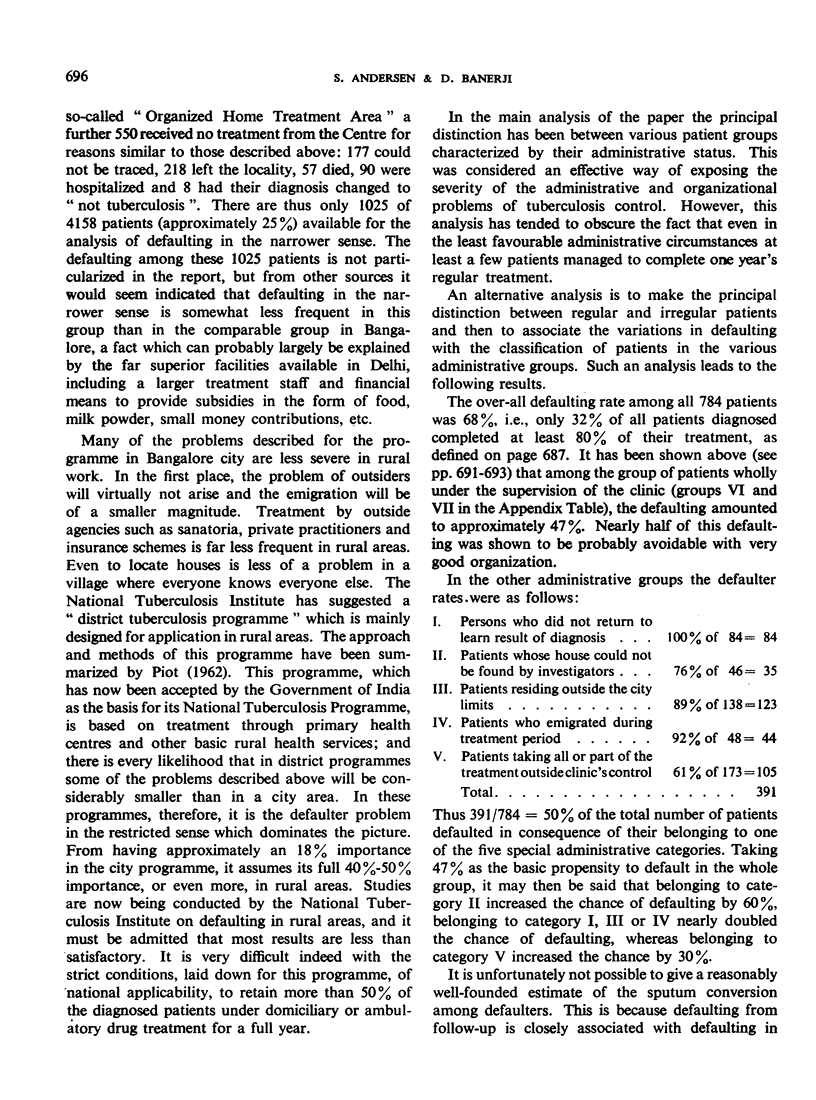
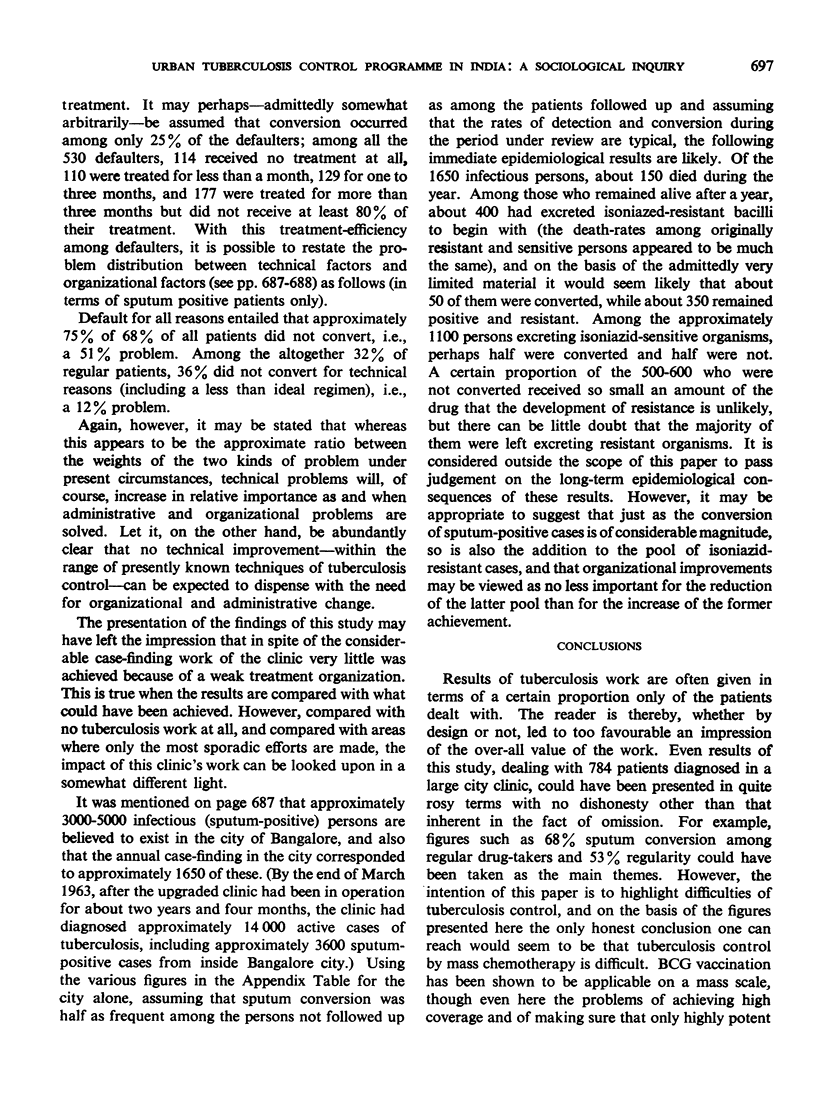
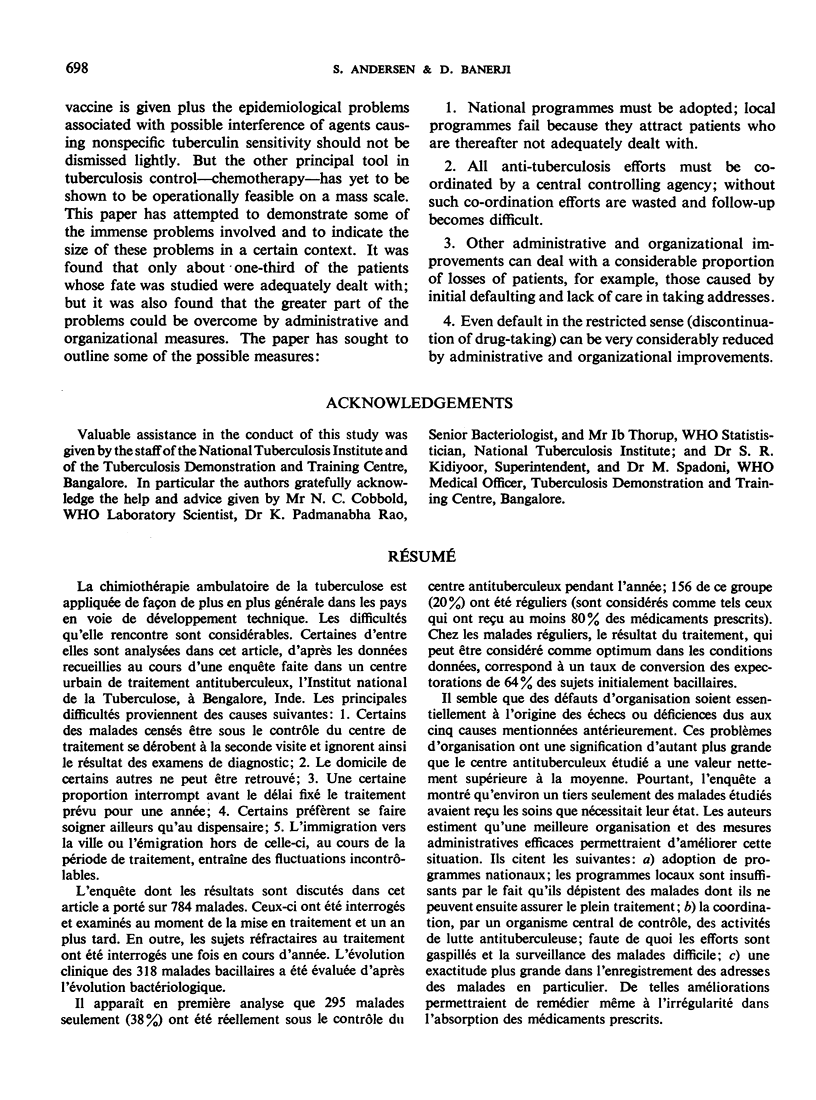
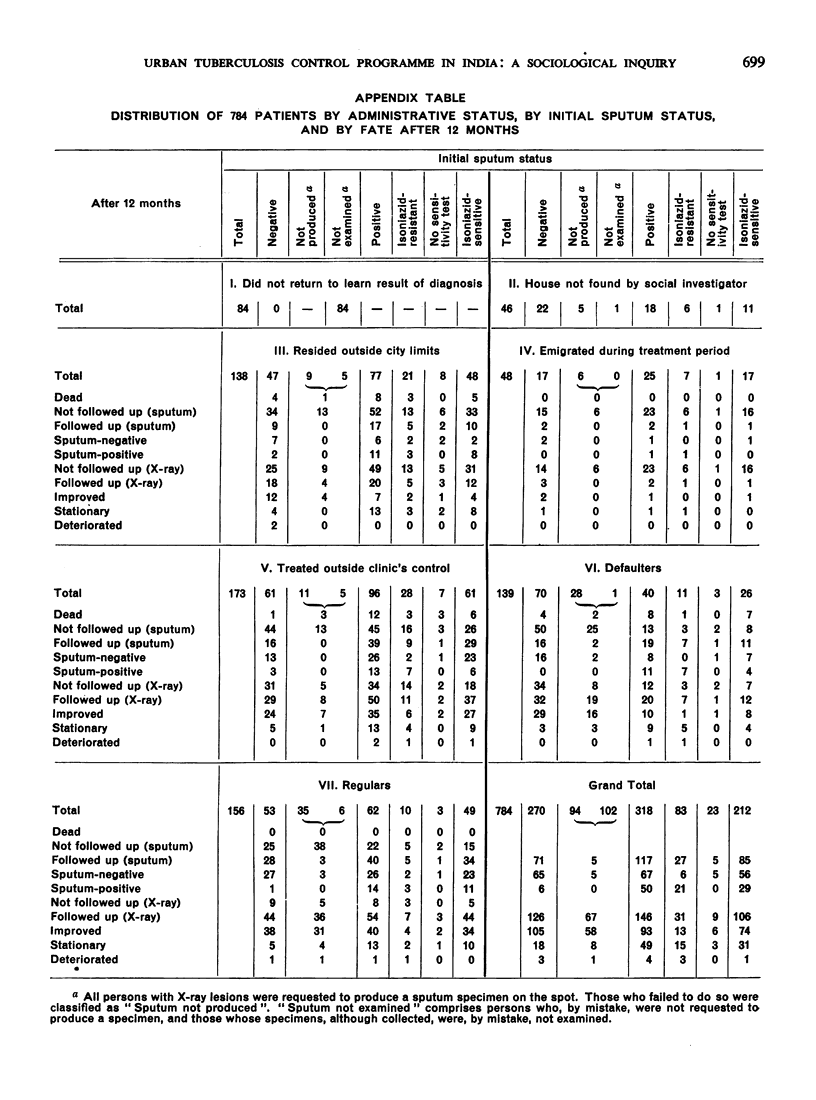
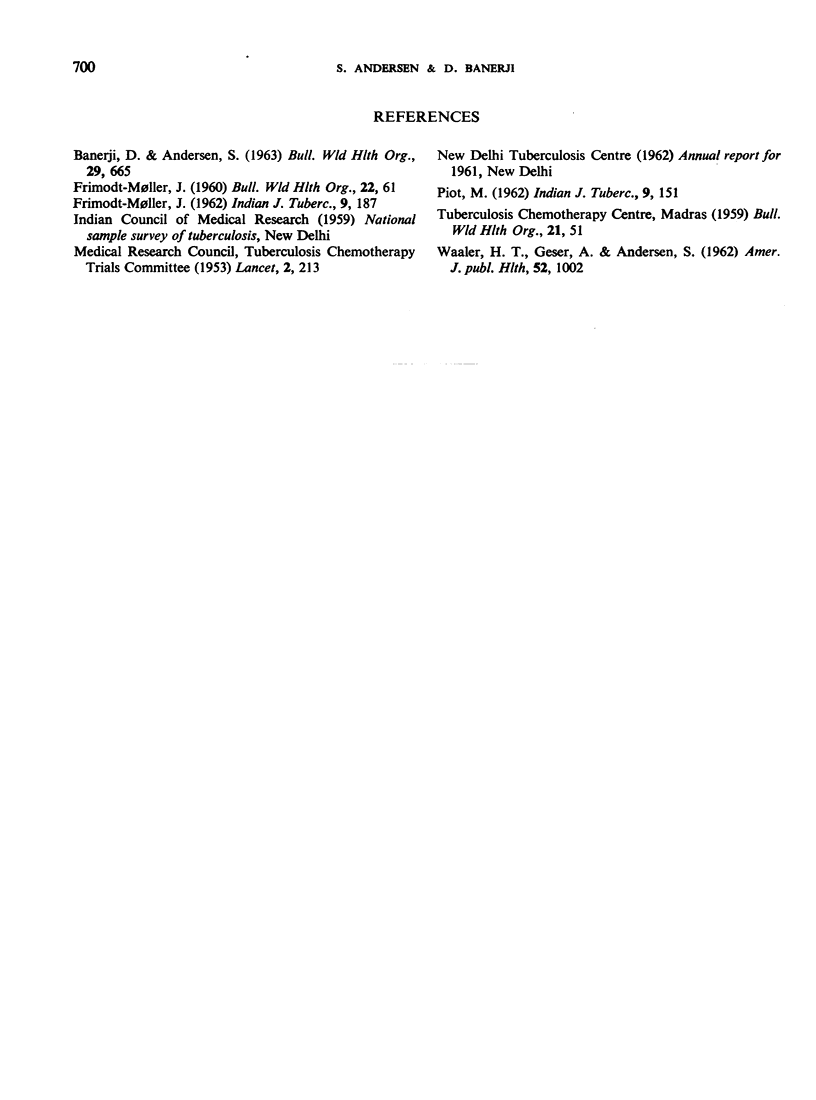
Selected References
These references are in PubMed. This may not be the complete list of references from this article.
- BANERJI D., ANDERSEN S. A SOCIOLOGICAL STUDY OF AWARENESS OF SYMPTOMS AMONG PERSONS WITH PULMONARY TUBERCULOSIS. Bull World Health Organ. 1963;29:665–683. [PMC free article] [PubMed] [Google Scholar]
- FRIMODT-MOLLER J. A community-wide tuberculosis study in a South Indian rural population, 1950-1955. Bull World Health Organ. 1960;22:61–170. [PMC free article] [PubMed] [Google Scholar]
- WAALER H., GESER A., ANDERSEN S. The use of mathematical models in the study of the epidemiology of tuberculosis. Am J Public Health Nations Health. 1962 Jun;52:1002–1013. doi: 10.2105/ajph.52.6.1002. [DOI] [PMC free article] [PubMed] [Google Scholar]


